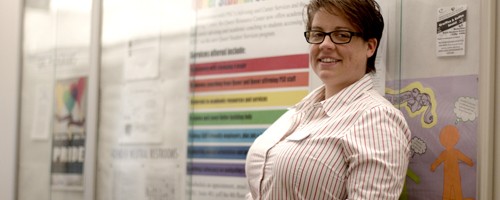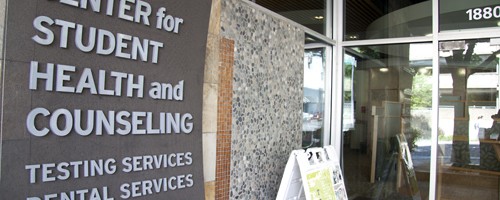Shattuck Hall’s new Ecological Learning Plaza is more than just the latest green-shaded corner at Portland State.
A living laboratory
Shattuck Hall’s new Ecological Learning Plaza is more than just the latest green-shaded corner at Portland State.
Beyond shrubbery and space, it doubles as a public garden and an outdoor research laboratory while promoting a cutting-edge vision of sustainability in ecology and design.
Unveiled at a grand ceremony July 10, the plaza won’t stay the same for long. Jeffrey Schnabel, an assistant professor of architecture who was a collaborator on the project, explained the changes at the ceremony.
“If you really like this particular version of the plaza, you should visit as often as you can in the next two years because the plaza as a laboratory will change,” Schnabel said. “New experiments will come in and take the place of these. The thing that will remain constant, though, is that it will always be a public place.”
Situated in front of Shattuck Hall Annex’s brick facade, the SHEL Plaza features “living walls”—vertical garden systems engineered to be ecologically sound.
Other features include solar panels and permeable paving designed using historic Portland cobblestone. The various plants surrounding the crowd gathered for the ceremony were both native and exotic—some hailing from as far away as New Zealand.
What was exclusively homegrown was the architectural design conceived by PSU students involved with the project. The plaza’s design and natural elements reflect a movement in architecture to make design more aesthetically pleasing and organic, Schnabel explained. They also reflect growing concerns about Portland’s role in the world economy.
“Green buildings and green construction techniques are one of the future exports of the Portland metropolitan area. The kinds of design you see here will be implemented not only in Gresham and Hillsboro but also in Shanghai and Dubai,” said Tom Hughes, president of the Metro Council.
Just a few years ago, the plaza was nothing but dirt and rubble.
“It looked terrible, honestly,” Schnabel said.
“This was the transformation of a dead space, a gap between two buildings,” said Clive Knights, chair of PSU’s architecture department.
Initially funded through Metro’s green innovation grant, the project was first conceived in 2008 when the former Campus Public Safety Office building was torn down.
“We asked if we could ‘do something’ with the empty space, and that was about as specific as it got at that stage,” Schnabel said.
PSU’s Coalition of Students Interested in the Ecodistrict and PSU architecture faculty members began work on what could have been an uncertain prospect, had it not been for what Schnabel called the power of myriad voices saying “yes.”
The plaza is a collaborative effort between students and faculty, the public sector and private firms. In the last couple of years, students have spent thousands of hours on the plaza without receiving academic credit or compensation, working solely out of a passion for the project, Schnabel explained.
“I’m so proud to have such a beautiful space on campus,” said PSU President Wim Wiewel. He then commended the interdisciplinary effort behind the plaza.
“What better way to make that visible than to bring your lab into the outdoors where everybody can see it?”





This inshgit’s just the way to kick life into this debate.
Thanks for any other informative web site. Where else may I get that kind of info written in such a perfect way? I have a project that I’m simply now running on, and I’ve been on the look out for such information.